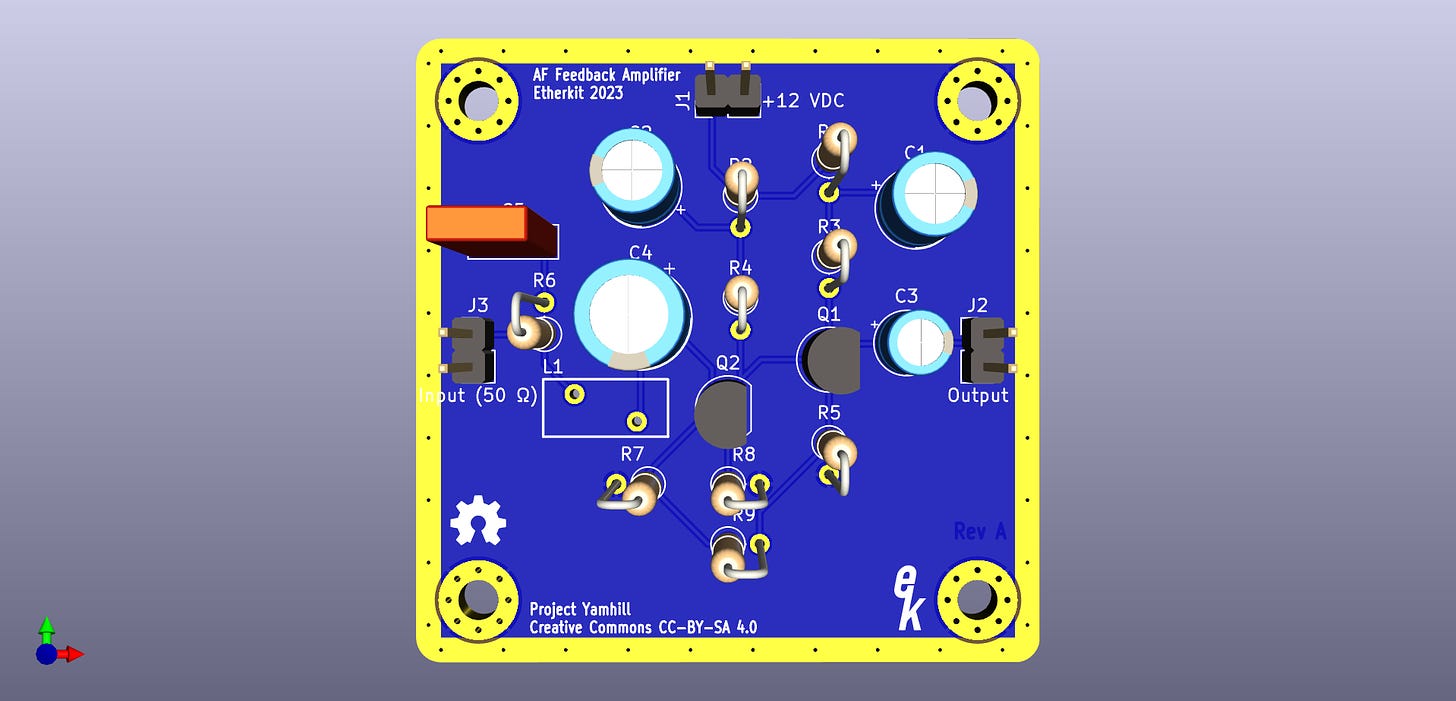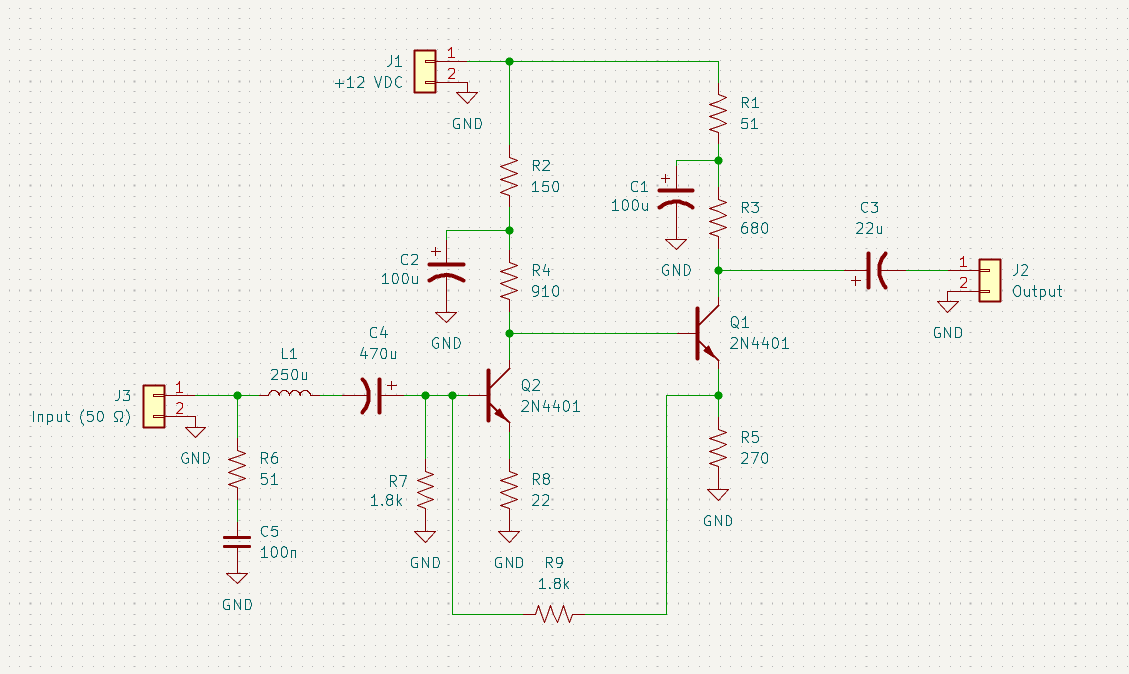The last circuit block in this first tranche of boards for Project Yamhill is an audio feedback amplifier specifically designed to be the first stage of audio amplification in a direct conversion receiver with a diode-ring mixer. This particular circuit was designed by the famous Wes Hayward, W7ZOI and can currently be found on his website.
In a direct conversion receiver, the properties of the first stage of amplification following the mixer are extremely important in setting the overall performance of the receiver. In quite a few classic DC receiver designs using diode-ring mixers, you would find a simple common-base NPN transistor amplifier. This topology gives a decent impedance match with the 50-ohm design of the diode-ring mixer, but also has some downfalls, as W7ZOI describes:
The circuit of Fig 1 is adequate for most applications, it falls down when strong signals are encountered. We don't expect excessive dynamic range from a bipolar amplifier that has such a low DC emitter current. A suggested solution changes the bias to increase the DC current. This drops the input impedance. The impedance is then brought back to 50 ohms by inserting resistance in series with the input. But this resistor serves to trash the noise figure of the amplifier.
Wes presents an alternative amplifier design that is only slightly more complex but addresses the dynamic range issues of the above CB amplifier.
The above circuit allows for greater dynamic range by standing more current in the first stage transistor, while still allowing for a low input impedance by utilizing parallel (negative) feedback to the base from the 180-degrees out-of-phase signal from the emitter of the second transistor stage:
A very common small signal RF amplifier circuit is a feedback circuit. This begins as a common emitter amplifier, biased to a high current in order to minimize distortion that would otherwise compromise the dynamic range. Amplifier gain is then reduced with negative feedback in two forms. One is emitter degeneration, or series feedback, where a resistor is inserted in the emitter lead. The other, parallel feedback, results from a resistor from the collector to the base. Both feedback forms reduce overall stage gain. But series feedback will increase both input and output impedance while parallel feedback decreases these impedance values.
Wes states that there is still a lot of room for measurements and experimentation with this amplifier, which is something that I definitely plan to do once I have PCBs in hand and the initial version of the circuit up and running.
What’s Next
This board took a bit longer to publish than I was hoping, mainly because I had a very large list of tasks to accomplish here at the new homestead before the rainy season arrived. I got most of those done, but I also got hit with a minor health issue that took a couple of weeks to get over. Bleh. Now that both of these issues are mostly in the past, I’m definitely going to have more time to devote to Project Yamhill this winter.
Now that all of the initial PCBs for my first tranche are designed, I’m almost ready to send them out for manufacturing. One final board that I plan to design before ordering PCBs is a generic Project Yamhill prototype PCB, with Manhattan-style pads. This will make it easier for me to whip up some prototype circuits of designs before making the jump to a full-blown PCB design.
So very soon I should be able to order all of the PCB designs and components, and start building the first Project Yamhill radio project: the direct conversion receiver. This is the part where I have to plead a bit for assistance. If you like what I have done so far and believe in my Project Yamhill mission, then please consider a paid subscription to this Substack publication in order to help fund the development of this project. My business, Etherkit, is still on ice (although I’m hoping that I can relaunch it with a bunch of new products some time next year) so that income stream isn’t available to me at the moment.
I’m still thinking over all of the ways to help build support and community around this project, which will now need to kick into high gear since I finally have enough of a design to make something real and tangible. One small thing I plan to do is offer some small gifts for referrals, via the Substack referral program. I also would like to start getting ready for some live chat related to Project Yamhill on my Matrix server, which is similar to Discord/Slack, but free and open source. As always, your constructive feedback is appreciated!






